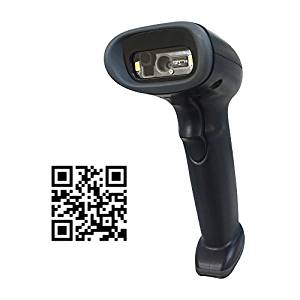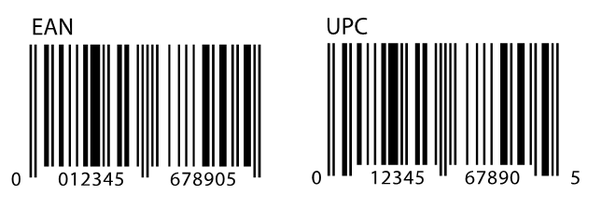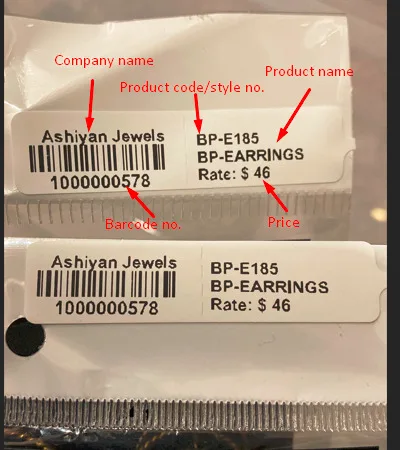Barcode inventory software is much more efficient than inventory system based on manual entries. Barcode scanning speeds up inventory management process and eliminates entry errors. Now traditional barcodes are gradually being replaced with QR codes. Are there any advantages or drawbacks in using QR codes over UPC barcodes for inventory management and asset tracking? The answer is: in most cases it does not really make much of a difference which type of barcode you are using: traditional UPC barcode, QR code or other type. More important is: what device or devices are you going to use for scanning – traditional barcode scanners or smartphones.


UPC (Universal Product Code) barcode is the barcode you see on most products. It is often called “manufacturer’s barcode.” The encoded number uniquely identifies the line item. It will be the same number for all companies that produce, store or sell this product.
UPC barcode is one dimensional (1D) linear barcode consisting of black and white stripes. Using this type of barcode you can encode only letters and numbers and only up to 16 characters. If your inventory or assets already have barcode from the manufacturer, most likely that’s UPC barcode.
What are QR Codes?
QR (Quick Response) code is a 2 dimensional (2D) barcode that can fit significantly more information (up to 4,296 alphanumeric characters) and diverse data. For example, in QR code you can encode binary data as well, such as small images. Although you can encode a lot of information in QR code, if you want QR code to be dynamic (you want to be able to change data that user sees or sends without re-printing QR code label), you will need to encode a unique item ID and fetch associated data from the database.
Equipment For QR Code and Barcode Scanning
People often associate QR code scanning with a smartphone, and barcode scanning with a barcode scanner. This is not entirely correct. You can use smartphones to scan both QR codes and UPC barcodes. Similarly, you can use most of the modern barcode scanners to scan both UPC barcodes and QR codes. Not all barcode scanners are capable of scanning QR codes, however. In order to do it, you need to purchase a 2D imager — a scanner that can read both 1D and 2D barcodes.
Does it matter what type of barcode to use for inventory management and asset tracking? There is a slight difference: QR codes can be scanned more reliably, and QR code can fit more data. However, what makes the most difference is not what kind of barcode to use, but what to use as a scanner: regular barcode scanner or a smartphone.
What Works Better For Assets / Inventory Scanning: Barcode Scanners or Smartphones?
As it happens often, there are pluses and minuses in both approaches, so the final decision depends on your business environment and goals. You can also use both for different tasks.
Advantages of using a smartphone as a scanner for inventory and asset tracking:
1. Wider Coverage Area
Barcode scanners have to either be plugged into a computer or (wireless type) be in the vicinity of the computer. Using a smartphone you can be anywhere and you still can scan assets and inventory.
2. Money Saving
If you plan to use barcode scanners, you will need to purchase at list 2-4 of them, plus possibly hire a consultant to connect barcode scanners to the computer (if you need wireless type). With the smartphones you do not need to purchase any extra hardware or do any additional setup – your employees can use their own smartphones to process asset or inventory transactions.
3. More Capabilities
Smartphone can be used for much more than just scanning – you can also enter and look up information, so it works more like a mobile computer.
Advantages of using traditional barcode scanners:
1. Speed
Barcode scanners work faster. It won’t make any difference if you typically have several items to scan at a time, but for high volume (100+ items) inventory transactions gain in speed is significant.
2. More Reliable In Poorly Lit Areas
Barcode scanners can scan more reliably in poorly lit areas, although it does depend on a specific model of barcode scanner or a smartphone.
Conclusion
In our opinion it is much more beneficial to use smartphones as scanners, especially if most of your employees own them. However, if you need to process high volume inventory or asset transactions (hundreds of items) fast, and do not need to keep track of any additional information, barcode scanners will work better for this situation.



